I have bought a Marshall JVM 205H with a 4×12″ Marshall Cabinett (1960) and a Roland BOSS GT 100. Because I want to use the 4 cable method for best sound, I looked through the web, found some videos and spent several hours to figure out things. Maybe it is not perfect, but I want to share my experiences with you.
Here you can see how I put cables together with the Amp:
Also my Amp settings:
Here you can download a diagram, how I did programming all the 200 user defined patches (was alot of work). You will find these patches below (Download). I also changed GT 100 settings. Choose „System->Output->Stack Return“ or whatever matches your Amp.
Download: BOSS GT 100 4 Cable Method GT 100 FX Settings
Here are my first 7 patches done for the 4 cable method. As I only use the distortion of my Marshall Amp, I have disabled all PrA/B settings and turned the input level back to 0dB. They start at U002-1 to U003-3. They have a prefix CR (Christian Rößner), CL for Clean and OD for Overdrive. If a /P is seen, Phaser is active. The second line in the LCD shows the Marshall channel mode (G,O,R for green, orange and red) followed ba the Accel pad (you can turn on Chorus or Compressor):
Download: CR 4 Cable Method Patches
Full example
Here is a full example, of how I did a patch. Background: I love to have a lto of gain and volume on the overdrive channel, when playing solo parts. But if I turn the knobs too high, the orange channel has too much gain as well. So if I want to play a song, which needs a rhythm overdrive sound, the orange channel is too much. Unfortunately the green channel is too less gain and overdrive. So here comes the point, where I make use of the features of the GT-100.
I decided to use the GT-100 for the rhythm section. I use MIDI to tell the amp to go on the green channel. If I switch to my solo patch, the amp switches to red. Second thing is using reverb. The reverb on the amp is designed to fade out, if switching the channel. While playing rythm guitar, I use the GT-100 to do reverb, as I can do a lot of settings here. Switching to solo, I use the amps reverb, because if my solo finishes and I return to the rhythm section, the reverb is not just shot off.
So here is, how I did the rhythm patch. First of all, you can have a look at the system settings that I use (thanks to Glenn DeLaune!)
I am not using any PrA/B from the GT-100!
Next you can see all the effects I am using. I also use „chorus“ with the Accel pad, but left the settings at their default values
So the sound I got, is similar to the grenn channel on the amp, but with more drive and a sligthy modified reverb.
Download: cr-od–l-r-chorus cr-od-g-chorus
I hope that helps some people to get a feeling, what you can do with the GT-100 and a 4 cable mthod. Enjoy!
Many thanks to:
Glenn DeLaune:
httpv://www.youtube.com/watch?v=JpmbEcYfEZI
…and to Sebastian Baetz and Thomas Pottek from Musikhaus SCHOENAU in Gießen
Feedback is very welcome!
 Rößner-Network-Solutions
Rößner-Network-Solutions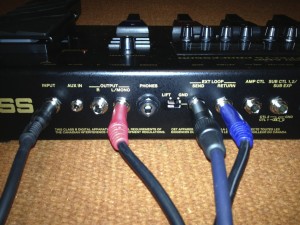
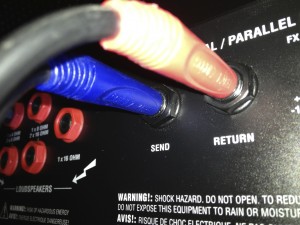
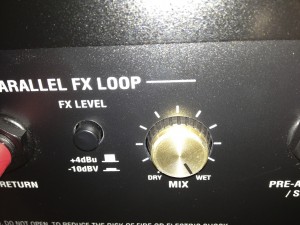
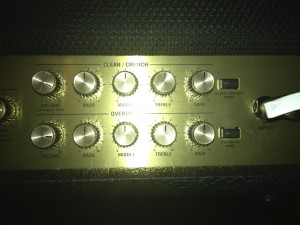
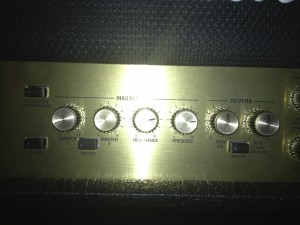
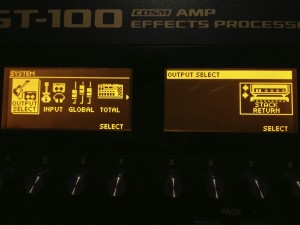
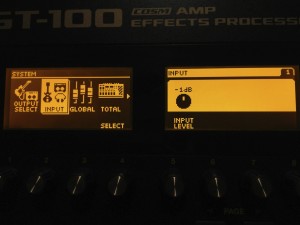
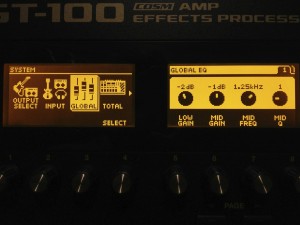
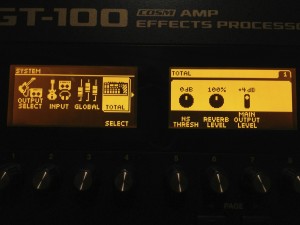
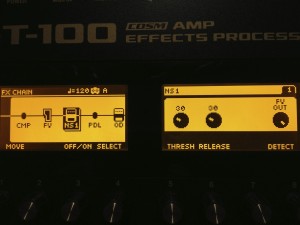
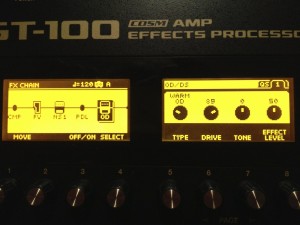
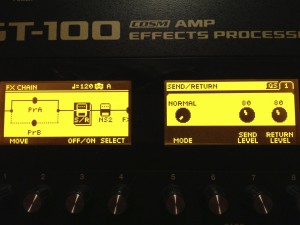
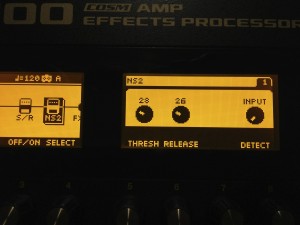
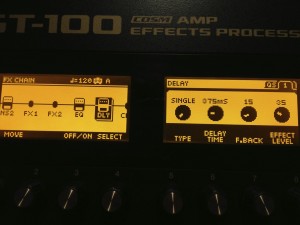
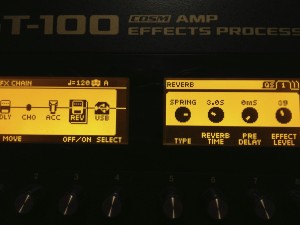
Hi Chris,
many thx sharing this information.
Did you use the GT-100 OD BEFORE S/R on clean channel, which means you would put a disturbed signal to the clean channel – which is not recommended. In my manual (Marshall 6101) it say’s „never put a disturbed signal to the clean channel“ ?
It’s not a problem to place the OD after the S/R chain, since this signal will go right into the power amp as far as I understand.
I am a newbie, so please excuse if I am wrong.
Just want to understand, how to setup the gear.
Keep posting !!
Regards
Dany
This is really a good question 🙂 I will have a closer look next week. When our band is playing again. But I will keep this in mind, as I really do not want to damage my amp. It might be that I put the OD after S/R, but I am really unsure right now.
If you would not use 4 cable method, wouldn’t you connect the whole GT to the clean channel?
http://www.guitarworld.de/forum/effekte-an-amp-anschliessen-nur-wo-t37844.html
„Es kommt im Wesentlichen darauf an, ob Du die Verzerrung Deiner Ampvorstufe nutzen möchtest. Falls ja, ist es eher üblich, modulierende Effekte (Chorus, Phaser, Flanger) sowie Hall oder Delay dahinter zu legen, also in den Effektweg (also Effects Send/Return).
Nutzt Du die Verzerrereinstellungen Deines Multieffektes, ist es eher üblich, ihn vor den Amp zu packen.“
That says: Put things like Chorus, Phaser, Flanger and effects like this in send/return. And normally you would put a distortion in front of your amp.
So yes, in my case I have the OD first, that goes directly from GT send into the Marshall line-in, then it runs through the pre-amp and returns from Amp send into return of my GT. Now I add further effect like delay and chorus and I go from line-out from the GT back to my Amp return.
So this is absolutely fine 🙂
In this case, I use the pre-amp of my Amp. I have torn off pre-amp in the GT! So never activate this on the GT. Does it help you?
Hi Chris,
habe ich das richtig verstanden, dass ich den Kanal vom Amp nur mit der MIDI-Verbindung switchen kann?
Ich benutze auch das BOSS GT-10 und habe immer das Problem, dass ich nie wusste, wie ich die Kanläle vom Amp über das GT-10 switchen kann!
So habe ich nun live auf der Bühne einmal den Footswitch von meinem Amp und das GT-10 und muss immer jeweils einen betätigen um Kanal und Effekt zu wechseln… eigentlich Schwachsinn oder?
Grüße
Okay
Grundsätzlich kannst du den Channel mit dem Amp-Switch und/oder dem GT schalten. Ich persönlich habe mir alle Channel im GT gespeichert, weil dann der Amp passend zur Bank schaltet. Also nur ein Schalter für alles 😉
Hi,
ich mache das genauso. Witzigerweise hab ich exakt das gleiche Setup JVM205, GT-100, und 1960. Ich benutze MIDI vom GT zum JVM – aber wenn ich „soundmässig“ fertig bin, dann hab ich nur ein Rolls Midi-Board (zum GT zum JVM), einen Taster an’s GT (für Soli) und mein gutes altes Cry-Baby vor mir stehen. Der Rest steht hinter mir in der Nähe vom Verstärker – dann brauche ich keine elend langen vier (oder mehr) Kabel, die auf der Bühne rumfliegen.
Gruss,
Thomas
Ok das würde ich gerne auch so machen! Mein Amp hat leider keinen MIDI Eingang. kann ich trotzdem die Kanäle wechseln oder geht das ausschließlich nur mit der MIDI Verbindung?
Here is some solo that I played recently (sound check)
https://www.roessner-network-solutions.com/?p=1164
Enjoy 🙂
Hi Chris,
langsam komme ich weiter – leider hab ich viel zu wenig Zeit. 🙁 Ich habe derzeit das Problem, dass irgendwas bei den Levels nicht stimmt. Ich betreibe das Setup so, dass ich sowohl beim JVM als auch beim GT Instrument levels nutze – sprich -10dB. Nun ist das so, dass mein JVM anscheinend recht viel aus dem Send „rausdrückt“ und ich damit einen sehr grossen Unterschied zwischen GT PreAmp und JVM lautstärkemässig habe. Irgendeine Idee? Im „schlimmsten Fall müsste ich das per Patch regeln – sprich PreAmp vom GT den level extremst hochschrauben in den Fällen wo ich nicht den JVM nehme (hauptsächlich sehr cleane Sounds) …
Gruss,
Thomas
PS: Antwort auch gerne per email …… evtl könnte das „hier“ ausarten ….. 😀